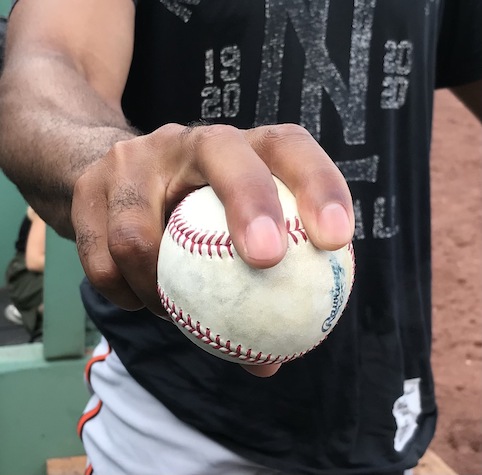Dillon Tate Talks Fastballs
Dillon Tate’s fastballs were primarily sinkers this season. Per Statcast, the 27-year-old Baltimore Orioles reliever threw 615 of them in total, versus just 16 four-seamers. Delivered with a one-seam grip at an average velocity of 95.5 mph, and with a spin rate that ranked in the third percentile, the offering has evolved into Tate’s signature pitch. Buoyed by its increased effectiveness, the right-hander appeared in a career-high 62 games, logging a 4.39 ERA and an almost-identical 4.40 FIP.
Tate discussed the evolution of his fastball(s) when the Orioles played at Fenway Park in mid-September.
———
Dillon Tate: “I’d always thrown a four-seam, but the evolution of my fastball changed throughout the years. When I was in high school, I would grip a standard four-seam, like so. But the way I was grabbing it… when you grab it with the horseshoe facing in — it’s making a “C” — and you throw it, the Magnus effect takes over; it will start to bring the ball down, and more so in to a right-handed hitter. When you flip it over — make it a backwards “C” — it fights gravity a little bit more, so will stay truer. I learned that in 2017 from one of my rehab coaches with the Yankees, Greg Pavlick.

“So, I’d been grabbing it [with the horseshoe facing in], and then with the Yankees switched over. I had a little bit of success, but then towards the middle-end of 2018, my fastball was getting hit pretty hard. That’s when I started switching over to a sinker, to a one-seam fastball. On a traditional two-seam fastball, a lot of guys will split the seams. I found comfort in going across the seam, and throwing my fastball with [the pointer finger] on one seam. I started to see my groundball rate go up. It’s turned out to be pretty good movement profile-wise — it dances more than my four-seam fastball did — so it’s been a better option for me. Read the rest of this entry »
